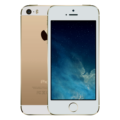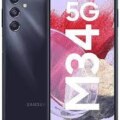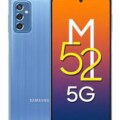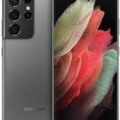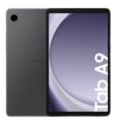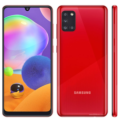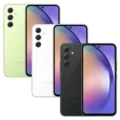- Home
- All Products
- Mobiles
- Apple iPhone SE 2 Price & Specs
Apple iPhone SE 2 Price & Specs


-
Processor: A13 Bionic
-
RAM: 3 GB
-
Storage: 64 GB, 128 GB, RAM, 256 GB
-
Display: 4.2 Inches
-
Camera: 12 MP
-
Battery: iOS 13, up to iOS 16.3
Specs
General
| Device Type | Smart Phone |
| Model | Apple iPhone SE 2 |
| Announced | 15 April, 2020 |
| Released | 24 April, 2020 |
| Status | Discontinued |
Network
| 2G Network | SIM1: GSM 850 / 900 / 1800 / 1900 |
| 3G Network | HSDPA |
| 4G Network | LTE |
| SIM <strong>SIM</strong> (Subscriber Identity Module) is a small card that contains mobile network subscriber's account information. This allows the phone using the card to attach to a mobile network. The SIM card is most commonly associated with GSM and UMTS mobile networks. Moving a SIM card from one phone to another allows a subscriber to switch mobile phones without having to contact their mobile network carrier. SIM cards can also be used by a phone to store limited amounts of data, such as phone numbers and text messages. | Nano SIM |
Design
| Type <strong>Design Type</strong> called form factor refers to a mobile phone's size, shape, and style as well as the layout and position of major components of phone. There are three major form factors seen in mobile phones => bar phones, folding phones and sliding phones. | Bar |
| Dimensions | 138.4 x 67.3 x 7.3 mm (5.45 x 2.65 x 0.29 in) |
| Weight | 148 g (5.22 oz) |
| Material | Glass front, glass back, aluminum frame |
| Colors | Black, White, Red |
Display
| Display Type <strong>Display Technology => </strong> A number of display technologies and types used in mobile phones => TFT (Thin Film Transistor), IPS (In-Place Switching), OLED (Organic Light Emitting Diode), AMOLED (Active-Matrix Organic Light-Emitting Diode), Super AMOLED (an even advanced version of AMOLED), Resistive Touchscreen (Resistive touchscreens contain two layer of conductive material with a very small gap between them which acts as a resistance), Capacitive Touchsceen (Capacitive touchscreen technology consists of a layer of glass coated with a transparent conductor) | Retina IPS LCD, 625 nits (typ) |
| Size | 4.7 inches, 60.9 cm2 (~65.4% screen-to-body ratio) |
| Resolution | 750 x 1334 pixels, 16:9 ratio |
| Display Colors <strong>Display Colors</strong> is refers to the number of different shades of colors that the screen is capable of displaying => 64K colors, 256K colors and 16 million colors, Obviously 16M is highest available range of colors and better than others. | 16M colors |
| Pixel Density <strong>Pixel Density (PPI)</strong> is refers to the concentration of pixels on a particular display, measured in pixels per inch (ppi). Pixel density is calculated by dividing the diagonal pixel resolution of a display by its diagonal size, higher pixel density better display quality. | 326 ppi density |
| Display Protection <strong>Display Protection => </strong> Gorilla Glass is a special alkali-aluminosilicate glass shield with exceptional damage resistance that helps protect mobile displays from scratches, drops, and bumps of everyday use, It is always better to go for a smartphone with Gorilla Glass for that added protection and peace of mind. | Ion-strengthened glass |
Software
| Operating System <strong>OS => </strong> Every computer system run on a base software called Operating System (OS). Operating System controls all basic operations of the computer (such as smartphone, PDAs, tablet computers and other handheld devices). The Operating System allows the user to install and run third party applications (apps), apps are used to add new functionality to the device. | iOS 13, up to iOS 16.3 |
| User Interface <strong>UI</strong> or user interface of a device is the look and feel of the on-screen menu system. How it works, its color scheme, how it responds to button presses, all of these things are part of the user interface. | ios UI |
Hardware
| Chipset <strong>Chipset</strong> is a group of integrated circuits designed to perform one or a more dedicated functions, often with real time computing constraints, Popular smartphones are equipped with more advanced embedded chipsets that can do many different tasks depending on their programming. | Apple A13 Bionic (7 nm+) |
| CPU <strong>CPU</strong> (Central Processing Unit) mostly known as processors, CPU processes instructions in order to carry out certain functions that make your device operate properly. Processors are often described as the brain of computers, smartphones and tablets, Smartphones and tablets rely on processors to carry out their every task, Processors are an incredibly important factor in selecting any type of computing device, including your smartphone. | Hexa-core (2x2.65 GHz Lightning + 4x1.8 GHz Thunder) |
| GPU <strong>GPU</strong> (Graphics Processing Unit) is a single-chip processor designed to rapidly manipulate and alter memory to accelerate the creation of images in a frame buffer intended for output to a display, This includes things such as lighting effects, object transformations, and 3D motion. | Apple GPU (4-core graphics) |
| RAM (Memory) <strong>RAM</strong> (Random Access Memory) is a type of computer memory that can be accessed randomly, any byte of memory can be accessed without touching the preceding bytes that allows information to be stored and accessed quickly from random locations. RAM is the most common type of memory found in computer systems, smartphones, tablets and other electronic devices. | 3 GB |
| Internal Storage <strong>Internal Storage</strong> is a data storage space (flash memory) mostly used in smartphones, tablets and other electronic devices where operating system, apps, music, photos, videos, files and other user data Is stored. | 64 GB, 128 GB, RAM, 256 GB |
| Card Slot <strong>Memory Card Slot</strong> is a special slot for inserting a memory card. Memory cards allow you to expand the phone's built-in memory, A memory card (sometimes called a flash memory card or a storage card) is a small storage medium used to store data such as text, pictures, audio, and video, for use on small, portable or remote computing devices such as mobile phones, mp3 players, digital cameras. | |
| Sensors <strong>Sensors</strong> are electronic components that detects and responds to some type of input from the physical environment. The specific input could be light, heat, motion, moisture, pressure and location, The output is generally a signal that is converted to use in computing systems, a location sensor, such as a GPS receiver is able to detect current location of your electronic device. | Fingerprint (front-mounted), accelerometer, proximity, gyro, compass, barometer |
Camera
| Primary <strong>Camera</strong> is able to capture photographs and usually videos, The most important characteristics of a camera are the resolution (measured in megapixels), lens focus type (fixed or automatic), higher megapixel cameras are known to capture higher quality photos, but not always a good measurement of the photos quality. | 12 MP, f/1.8 (wide), PDAF, OIS |
| Secondary | 7 MP, f/2.2 |
| Video | 4K@24/30/60fps, 1080p@30/60/120/240fps, HDR, OIS, stereo sound rec. |
| Camera Features | Quad-LED dual-tone flash, HDR, panorama |
| Flash <strong>Flash Light => </strong> There is commonly two types of flash lights are used in camera mobile phones, LED Flash (LED flash offers lower power consumption with drive circuitry that takes up very little room, LEDs can be strobed faster than any other light source), Xenon Flash (xenon flash produces an extremely intense full-spectrum white light for a very short duration) |
Connectivity
| Wi-fi <strong>Wi-Fi</strong> is a popular wireless networking technology using radio waves to provide high-speed network connections that allows devices to communicate without cords or cables, Wi-Fi is increasingly becoming the preferred mode of internet connectivity all over the world. | Wi-Fi 802.11 a/b/g/n/ac/6, dual-band, hotspot |
| Bluetooth <strong>Bluetooth</strong> is a wireless communications technology for exchanging data between mobile phones, headsets, computers and other network devices over short distances without wires, Bluetooth technology was primarily designed to support simple wireless networking of personal consumer devices. | 5.0, A2DP, LE |
| GPS <strong>GPS</strong> The Global Positioning System is a satellite-based radio navigation system, GPS permits users to determine their position, velocity and the time 24 hours a day, in all weather, anywhere in the world, In order to locate your position, your device or GPS receiver must have a clear view of the sky. | GPS, GLONASS |
| Wi-fi Hotspot | |
| USB | Yes |
| NFC <strong>NFC</strong> (Near field communication) is a set of standards for smartphones and similar devices to establish peer-to-peer radio communications with each other by touching them together or bringing them into proximity, usually no more than a few inches. | |
| Wireless Charging <strong>Wireless Charging</strong> (Inductive Charging) uses an electromagnetic field to transfer energy between two objects. This is usually done with a charging station. Energy is sent through an inductive coupling to an electrical device, which can then use that energy to charge batteries or run the device. |
Data
| GPRS <strong>GPRS</strong> (General Packet Radio Service) is a packet oriented mobile data service on the 2G and 3G cellular communication system's global system for mobile communications (GSM), Generally, GPRS is used for the purpose of wireless data transfer, such as sharing pictures and videos or browsing the Internet via a mobile phone connection. | |
| EDGE <strong>EDGE</strong> (Enhanced Data GSM Environment) is a wireless network technology generally considered the next step in the 2G network offers data transfer rates up to four times faster than ordinary GSM networks, Generally, EDGE is used for the purpose of wireless data transfer, such as sharing pictures and videos or browsing the Internet via a mobile phone connection. |
Messaging
| SMS <strong>SMS</strong> (Short Messaging Service) is a text messaging service component of phone, Web, or mobile communication systems. It uses standardized communications protocols to allow mobile phone devices to exchange short text messages over the networks. | Yes |
| MMS <strong>MMS</strong> (Multimedia Messaging Service) is a standard way to send messages that include multimedia content (audio clips, video clips and images) to and from mobile phones over wireless networks using the WAP protocol. | |
| Email <strong>Email</strong> (Electronic Mail) is a system for receiving, sending, and storing electronic messages, Similar to a letter, email is text messages that may contain files, images, or other attachments sent via the internet to a recipient by using applications and software prograps. An email address is required to receive email, and that address is unique to the user. |
Media
| Audio Playback | |
| Video Playback | |
| FM Radio | |
| Loudspeaker | |
| Ring Tones | MP3, WAV |
| Alert Types | Vibration, ringtones |
| Handsfree | No |
Battery
| Battery Type <strong>Battery Type => </strong> Cell phones run on various kinds of batteries depending on the manufacturer, phone size or shape and features. There are basically four types of cell phone batteries => Lithium Polymer, Lithium Ion, Nickel Metal Hydride and Nickel Cadmium. | Li-Ion (Lithium Ion) |
| Capacity <strong>Battery Capacity</strong> is a measure (typically in Amp-hr) of the charge stored by the battery, and is determined by the mass of active material contained in the battery. The battery capacity represents the maximum amount of energy that can be extracted from the battery under certain conditions. | 1821 mAh |
| Placement | Fixed |
The second-generation Apple iPhone SE 2 also known as the iPhone SE 2020, is a smartphone created and sold by Apple Inc. It was introduced in April 2020 and is viewed as a cost-effective option among Apple’s lineup of gadgets.
The 4.7-inch Liquid Retina display on the iPhone SE 2 (2020) is powered by the same A13 Bionic processor as the iPhone 11 series. Additionally, it has two high-resolution cameras—a 12MP rear camera and a 7MP front-facing camera. The gadget features Touch ID for biometric authentication and is powered by Apple’s most recent iOS operating system.
Table of Contents
The iPhone SE 2 or SE 2020 shares many visual characteristics with the iPhone 8 in terms of appearance, including a glass and aluminum body and a physical home button with Touch ID. It comes in three colors, black, white, and (PRODUCT)RED, and three storage sizes, 64GB, 128GB, and 256 GB. Overall, the iPhone SE 2 or SE 2020 is a popular choice among users who want the newest technology without breaking the bank because it provides an affordable way to experience the features and most recent technology of Apple’s devices.
Connectivity & Networking
The following networking and connectivity features are available on the Apple iPhone SE (2nd generation):
- LTE Advanced: The iPhone SE (2020) is compatible with fast cellular connectivity and supports LTE Advanced, which offers more immediate download and upload speeds than conventional LTE.
- Wi-Fi: The machine has 802.11a/b/g/n/ac Wi-Fi support, so you can join a wireless network to access the internet. Additionally, dual-band (2.4GHz and 5GHz) Wi-Fi is supported.
- The iPhone SE 2020 supports Bluetooth 5.0, making it possible to pair with various wireless accessories like speakers, headphones, and fitness trackers.
- GPS: You can use location-based services and navigation apps thanks to the device’s integrated GPS, GLONASS, Galileo, and QZSS satellite systems.
- Near Field Communication (NFC): The iPhone SE (2020) also has NFC capabilities, which enable features like Apple Pay for contactless payments.
- Additional Connectivity: The device also has a nano-SIM tray for inserting your SIM card from your cellular plan and a Lightning port for charging and data transfer.
Keep in mind that depending on your location and carrier, the specific connectivity and networking options you have may change.
Design of iPhone SE 2
The Apple iPhone SE (2nd generation), also known as the iPhone SE 2020, is based on the iPhone 8 and has a traditional body made of glass and aluminum. The gadget weighs 148 grams and has dimensions of 138.4 mm by 67.3 mm by 7.3 mm.
A large bezel surrounds the 4.7-inch Liquid Retina display on the front of the iPhone SE (2020). The display has a pixel density of 326 PPI and a resolution of 750 x 1334 pixels. The physical home button, which doubles as the Touch ID fingerprint reader, is located below the display.
The Apple logo is prominently displayed in the center of the glass-covered device’s back. The 12-megapixel camera, which can produce high-quality images and videos, is also located on the back.
Black, white, and (PRODUCT)RED are the three color options for the iPhone SE 2020, which is also offered in 64GB, 128GB, and 256GB storage sizes.
The iPhone SE (2020) is a great option for those looking for a smaller device that can still handle the newest technology and features because it has a classic, timeless design that is both small and comfortable to hold.
Memory of iPhone SE 2
There are three storage options for the Apple iPhone SE (2nd generation), also known as the iPhone SE (2020): 64GB, 128GB, and 256 GB. This means that regardless of whether you need to store a lot of pictures, videos, music, or other files, you can select the amount of storage that best suits your needs.
The internal storage of the iPhone SE 2020 is the only storage option since the device lacks a microSD card slot. To store and access your files from anywhere, you can use cloud storage services like iCloud.
The iPhone SE (2020) has 3GB of RAM, which is more than enough for a responsive and effective user experience. The device’s A13 Bionic chip, which powers it, offers quick performance and effective power management, making it simple to run taxing apps and multitask.
Processor of iPhone SE 2
The A13 Bionic chip, which also powers the iPhone 11 series, powers the Apple iPhone SE 2, also referred to as the iPhone SE (2020). This chip’s processor is strong and effective, offering quick performance and minimal power consumption.
The iPhone SE 2020 can run demanding apps and multitask with ease thanks to the A13 Bionic chip’s 6-core CPU and 4-core GPU. You can use the device’s advanced features and capabilities because it also supports cutting-edge technologies like augmented reality and machine learning.
Even when running demanding apps and multitasking, the iPhone SE (2020) offers a fluid and responsive user experience. You can use your device for extended periods without worrying about battery life thanks to the A13 Bionic chip’s quick performance and effective power usage.
Camera specs of iPhone SE 2
A 12-megapixel camera with a variety of cutting-edge features and capabilities is included with the Apple iPhone SE 2, also referred to as the iPhone SE (2020). The following are the main camera specifications:
- High-quality photos and videos can be captured with the camera’s 12-megapixel resolution.
- Aperture: The camera has an f/1.8 aperture, which helps it take photos that are sharp and detailed even in low light.
- Image stabilization: The optical image stabilization (OIS) feature on the camera helps to lessen blur and produce clearer pictures and videos.
- Focus: The camera features phase detection autofocus (PDAF), allowing for quick and precise focusing so you can get the perfect shot.
- The camera can record 1080p HD video at up to 120 frames per second and 4K video at up to 60 frames per second. Additionally, it supports an extended dynamic range for videos, which makes for more realistic videos with better clarity and detail.
- Front-facing camera: The iPhone SE 2020 has a 7-megapixel front-facing camera as well, which can be used to make FaceTime calls and take high-quality selfies.
Overall, the iPhone SE (2020) camera offers a high level of performance and capability, making it a fantastic option for those who want a device with a capable camera that can take excellent photos and videos.
Performance of apple iPhone SE 2
The Apple iPhone SE (2nd generation), also referred to as the iPhone SE 2020, is an effective and powerful device that offers a fluid and responsive user experience. The same A13 Bionic chip that powers the iPhone 11 series serves as the device’s power source.
The iPhone SE 2020 can easily handle multitasking and demanding apps thanks to the A13 Bionic chip’s 6-core CPU and 4-core GPU. You can experience cutting-edge features and capabilities on the device thanks to its support for cutting-edge technologies like machine learning and augmented reality.
Even when running demanding apps and multitasking, the iPhone SE 2020 performs quickly and effectively. The device has 3GB of RAM, which offers quick and responsive performance and makes it easy to switch between apps and use several apps at once.
The iPhone SE’s battery life is another plus (2020). A lithium-ion rechargeable battery inside the device enables up to 13 hours of internet use and up to 8 hours of video playback. Even with daily use, the battery is made to last for several years.
The iPhone SE (2020) is a great option for those looking for a small device that can handle demanding tasks and multitask with ease because it is a powerful and efficient device that offers a smooth and responsive user experience.
iPhone SE 2 Pros & Cons
| Pros | Cons |
|---|---|
| Affordable price | No headphone jack |
| Compact design | Limited storage capacity |
| Powerful performance | Smaller screen |
| Capable camera | No wireless charging |
| Long battery life | No Face ID |
iPhone SE 2 price in Pakistan
Apple iPhone SE 2 price in Pakistan is probably lower, though, as it is now an older model and has been replaced by several newer iPhone models like iPhone 7 and iPhone 8 Plus but the new iPhone SE price in Pakistan is around 88,000. Check websites like iShopping, OLX, or Daraz, to find the most recent iPhone SE 2 prices in Pakistan. Remember that prices on these websites can vary, and you should always exercise caution when buying from individual sellers.
Apple iPhone SE 2 different City Prices in Pakistan
| City | Prices |
|---|---|
| Price in Islamabad | Rs 88,000/- |
| Price in Lahore | Rs 88,000/- |
| Price in Faisalabad | Rs 88,000/- |
| Price in Karachi | Rs 88,000/- |
| Price in Peshawar | Rs 88,000/- |
| Price in Quetta | Rs 88,000/- |
Conclusion
The Apple iPhone SE (2nd generation), also referred to as the iPhone SE 2020, is a small and reasonably priced iPhone that offers strong performance, a capable camera, and a long battery life. The A13 Bionic chip that powers the device offers quick and effective performance even when multitasking and running resource-intensive apps. The 12-megapixel camera on the iPhone SE (2020) can capture images and videos of the highest quality, and it is powered by a rechargeable lithium-ion battery that can support up to 13 hours of internet use and 8 hours of video playback.
The iPhone SE (2020) is a great option for people who want a high-quality iPhone at a lower price, despite having some limitations like no headphone jack, limited storage, a smaller screen, no wireless charging, and no Face ID. The device offers a fluid and responsive user experience, making it a great option for those looking for a small, powerful iPhone that can easily handle demanding tasks and multitasking.
FAQ
What is the price of iPhone SE 2 in Pakistan?
The price of iPhone SE 2 in Pakistan is 88,000.
What is the Launch Date of Apple iPhone SE 2?
The Launch Date of Apple iPhone SE 2 is April 24, 2020.
How old is the iPhone SE 2nd generation?
It was launched in 2020.
Is The iPhone SE 2 waterproof?
iPhone SE is splash, water, and dust resistant.
Does iPhone SE 2 have 5G?
No. only the iPhone 14 range, iPhone SE (2022), iPhone 13 range and iPhone 12 range support 5G
Disclaimer: The Apple iPhone SE 2 prices listed on this page are sourced from local shops and dealers and are updated daily. While we strive for accuracy, we cannot guarantee that the price information of the Apple iPhone SE 2 provided on this page is 100% correct, as human error is possible. We recommend that you visit your local shop for exact pricing information. Thank you for your understanding.

